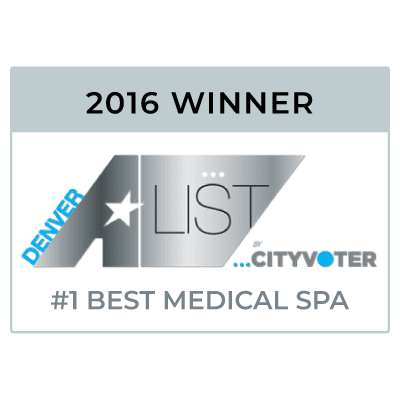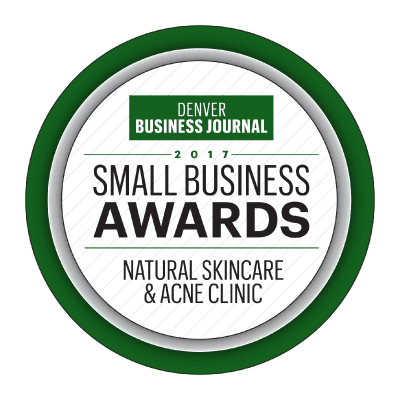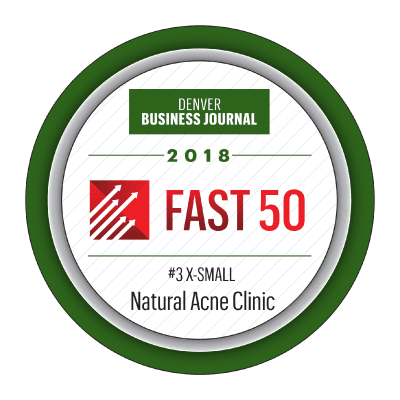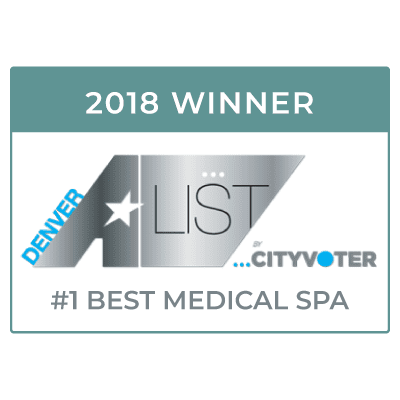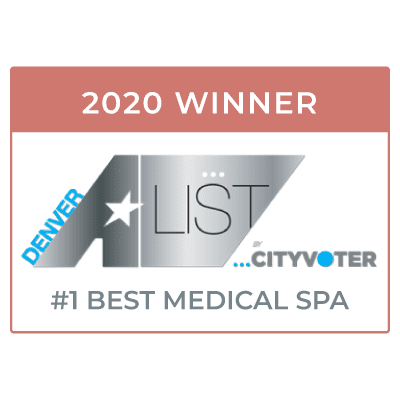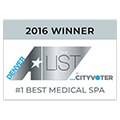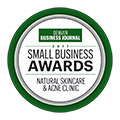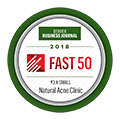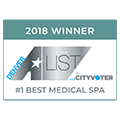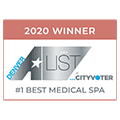You expected pimples in high school. Maybe even a few in college, too. But now you’re in your mid-20s…or perhaps even your 30s. And your skin didn’t get the memo–because you’re still breaking out.
What gives?
It’s one thing to get pimples when you’re a teen. But it’s quite another when you’re well over 21! In fact, adult acne is very common and on the rise.
According to the American Academy of Dermatology, more and more women have acne in their 30s, 40s, 50s, and beyond.
Teen acne and adult acne are caused by the same thing: genetics and androgen hormones. But these two types of acne manifest in different ways.
Do you know YOUR primary acne cause? Still struggling with an unsure self-diagnosis?
We created a short quiz to help you Discover YOUR Complexion Causes
When does teen acne end and adult acne begin?
Females are considered to have teen acne until the age of 24; men until 22. After that time, it’s considered adult acne.
Women are more likely to get adult acne – but plenty of men do, too. While 80% of teenagers get acne, 20% of those teens will have acne as an adult, too. Some people have beautiful skin in their teens and develop acne for the first time in their mid-20s.
And while you can grow out of teen acne, adult acne is considered a forever thing. That’s because retention hyperkeratosis—the ultra-fast cell turnover process that’s the primary cause of acne—is genetic. If your mom and/or dad had acne-prone skin, you’re probably going to have adult acne.
But the picture isn’t all that bleak! It is entirely possible to clear your adult acne and keep your skin under control, no matter how stubborn your acne is right now. You just have to be aware that you’re genetically predisposed to acne, and that new acne will keep forming under the surface unless you stay ahead of it.
What does teen acne look like?
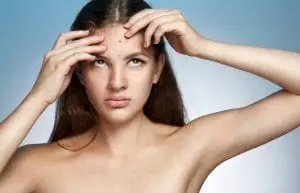
It probably comes as no surprise that there is a big connection between teen acne and puberty. Teenage acne tends to show up all over the face, and back, chest and shoulders. It typically does not become inflamed until the age of 15 or after. Up until that point, most teen acne is non-inflamed or “little flesh colored bumps”. Teens also tend to have more blackheads and clogged pores.
Since girls start developing first – that is, when hormones like estrogen and testosterone start to kick in — they get acne first. Girls can start getting acne as young as 10 or 11 and it often starts as non-inflamed bumps on the forehead. At the age of about 13 to 14, teen girls will noticed the acne started to become more red and inflamed and travel down the face to the cheeks and chin.
Since boys start puberty later, they start getting acne later. At 14 or 15 years old they will start getting red inflamed breakouts on the cheeks, jawline and chin.
Teen boys have a higher likelihood of developing cystic acne as they approach 17 and older. That’s the age when androgen hormones like testosterone are running high.
What does adult acne look like?
Adult acne is more commonly found on the lower face, chin and jawline as nodules (red, inflamed and about the size of a pencil eraser head) on the skin. Each breakout also tends to last for 1-2 weeks. This happens when the clogged pores mix with the P.Acnes bacteria on your skin, leading to infection and inflammation
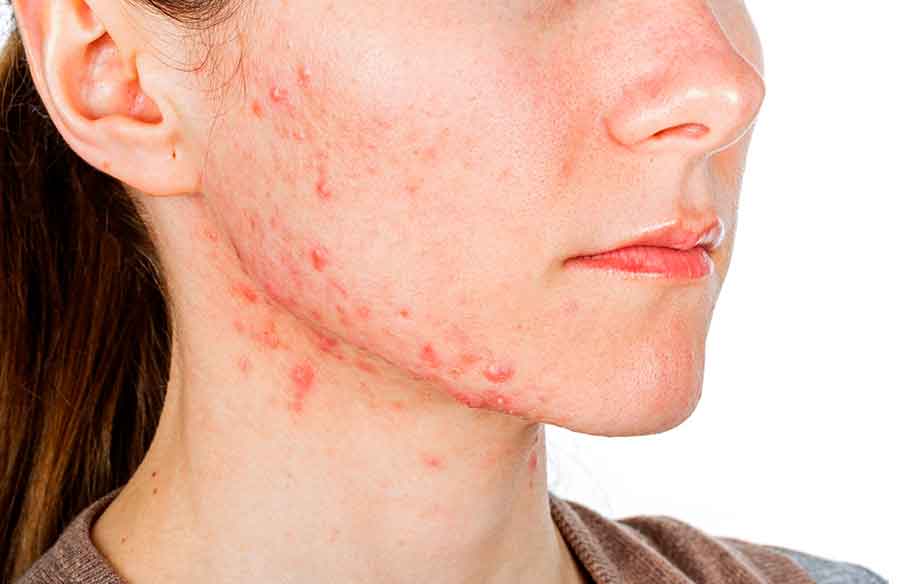
While overactive oil glands and testosterone play a big role in teenage acne, adult acne is a bit more complicated. Gut and hormone imbalance, food sensitivities, acne causing foods, medications and supplements and more. And it’s particularly frustrating because it’s more persistent than teenage acne.
Women with adult acne, for example, see more breakouts 7-10 days before their menstrual cycle, during pregnancy and even menopause. Hormonal-based birth control pills play a role in adult acne as well as many birth control pills and devices can be acne causing.
Your acne treatment plan
Basically, teen and adult acne is treated in the same manner…but with a few minor differences.
Cleanse, tone, moisturize. No matter if you have teen acne or adult acne, your best treatment plan starts with a good skin cleansing regimen plus a lightweight moisturizer. Be sure to stay away cleansers, moisturizers, makeup and skin care products with pore-clogging ingredients (check out the list of worst offenders here).
Apply topical acne treatments. Both teens and adults should treat their acne with using products that contain active acne-fighting ingredients. Mandelic acid, for example, helps dissolve the dead skin cells that can start pimples, while benzoyl peroxide helps kill acne-causing bacteria and reduce inflammation. Vitamin A (both topically and in supplement form) can promote the healthy turnover of skin cells.
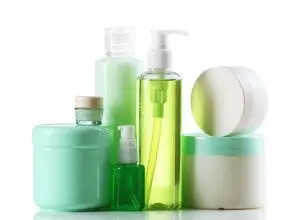
Young skin especially needs to use antibacterial products like benzoyl peroxide to reduce bacteria and dry up all that oil that makes the areas around the cheeks and nose to shine. Since teen acne consists of more blackheads and clogged pores regular facial peels and extractions can also make a big difference in the way your skin looks and feels.
Don’t forget to exfoliate! Sloughing away dead skin cells on the surface of your skin is one of the most important aspects of every skincare routine. Exfoliating not only helps relieve acne, it also increases circulation of blood and nutrients to the skin.
Teens and adults should exfoliate their skin with products that contain glycolic acid or mandelic acid. Mandelic acid has antibacterial as well as antimicrobial properties. It also soothes skin and helps post-acne red marks fade away.
Since teen skin is more delicate and sensitive, gentle products are the key to success. A gentle cleanser, toner and, a balancing moisturizer such as Clove Hill Balancing Lotion helps hydrate while soothing inflammation. Then, add a thin layer of acne-fighting products to keep breakouts at bay.
Whether you have teen acne or stubborn adult acne, our Online Acne Program creates a customized program tailored to your particular skin. We continually adjust your skincare regimen and suggest targeted supplements and foods that keep your skin clearing, not clogging.
Ready to clear your acne once and for all? We can help.
From our experience treating thousands of clients, acne usually appears to be caused by a combination of issues, rather than one. That’s why a typical one-size-fits-all approach rarely works when it comes to clearing and controlling acne over the long run.
If you have tried it all and still have acne, our comprehensive 16-week Online Acne Program is the answer. Our Online Acne Program has a 95% success rate helping thousands of clients get clear. We can help you too!
Get started on your journey to clear by booking an Online Acne Consult today.
